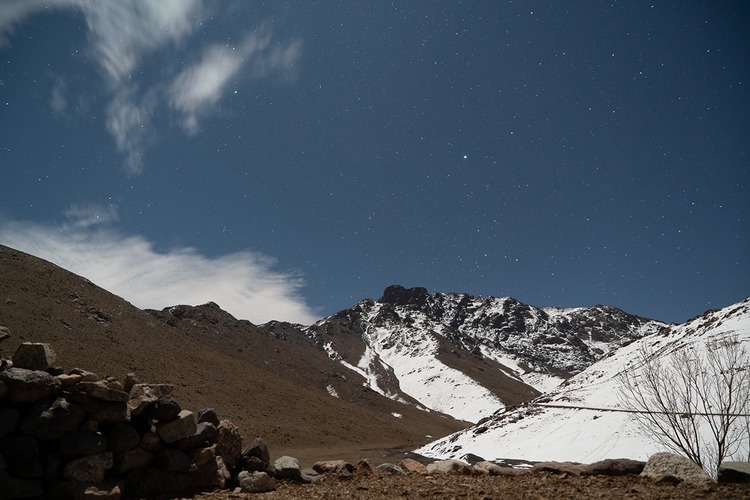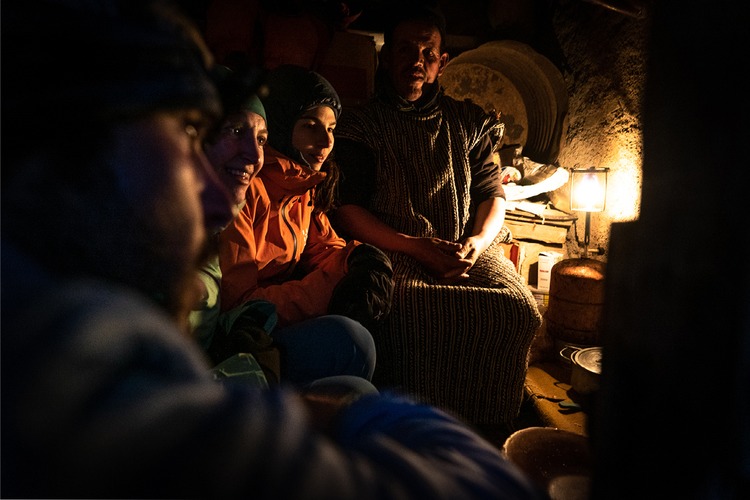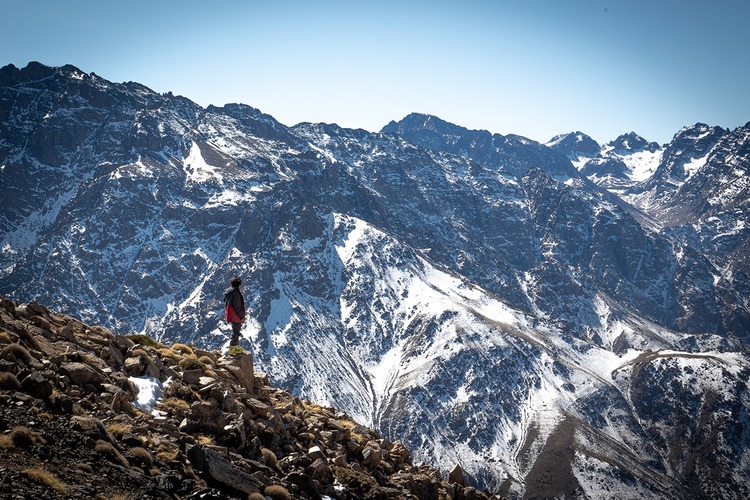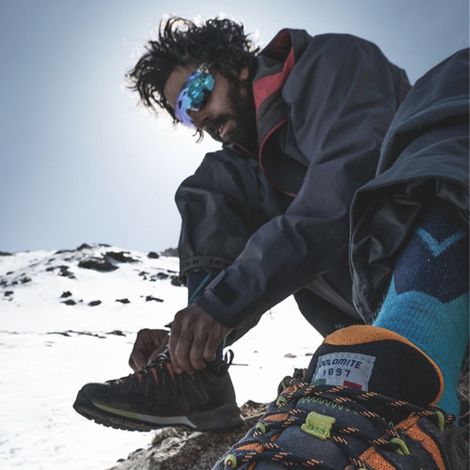The magic of Morocco
“A legendary place where the Atlas Titan, deceived by Heracles, is robbed of three golden apples and forced to support the sky with his arms. A place populated by troubled people, never submissive or absorbed by conquerors; always lived in the mountains and in the desert, always finding safe refuge. The High Atlas is the highest chain of the three ridges that make up the Moroccan mountain system and culminates with the Toubkal at 4,165 m, the 4,071 m Ighil M’gun and the 3737 m Ayachi. In the High Atlas, snow can last up to nine months above 3,000 m while glaciers do not exist "
The experience in the mountains of Morocco represented for me a real mix between exploration, survival and a spirit of adaptation! I had heard of the Atlas mountain range, and when the idea of an exploratory ski tour was proposed between the mountain valleys and mountain huts in that area, I immediately wanted to participate.

The travel program, which included hiking on skis for the entire stay in Morocco, has changed plans due to the lack of snow in the Toubkal Imnane valley. We enjoyed just three days of ski backcountry exploring the mountains of the mountain range in the Oukaïmeden area (a ski resort an hour and a half from the city of Marrakesh), a ski resort, if you can call it that, remained in the 80s. Staying overnight in Berber houses, real stables at 2600mt altitude was not so bad, excellent spicy food, Tajine and couscous, a tradition that has been handed down for centuries, I would say a little different from what we are used to living in our mountains! Homarr, the householder, walks two hours every day on foot to return to the village with his family, like everyone else there in the valley, a life difficult for us Europeans to understand, a poor life made of nothing, made of little, but here the hospitality is sacred and with just 1,000 dirhams (about € 100) we stay for three nights on full board.

With the mules (the only means of transport) we reach the snowy slopes in the north: short hikes and incredible views of the summits, a marked line marks the border with the areas exposed to the south, barren without a trace of snow. The highest settlement we visited is located in the Rhirhaia valley, Tizi N'Tacheddirt, a small village, about 4 km away from Ikkiss, where access is limited to a steep and winding path; here we spent a couple of days, in a more or less normal accommodation (a room for four people!), but given the scarce snow cover we took the opportunity to go hiking.

The last days of travel end in Imil, undoubtedly the preferred place for the hiking lovers visiting the Atlas, here we stay in the first "tourist village" from where start the paths for ascents to the roof of North Africa, the Toubkal, mountain which every year attracts a large number of hikers. The climb, with little snow, does not present technical difficulties, even here the approach for tourists is facilitated by the mule drivers and mules carrying the weights, one of the main sources of income for the local populations.
Reluctantly we decide not to transport the ski equipment at high altitude, the snow is very little, so we proceed on foot and without mules. With a 5-hour walk we reach the Mouflones Refuge (3,207 m), only the next day we will be on top of the Jbel Toubkal (4,167 m), all with light and with our performing hiking shoes, the DOLOMITE Crodarossa Trek GTX, which they accompanied us for the entire ascent, overcoming only short stretches of ice with quick-connecting crampons.

The panorama on the summit was incredible, I think I have never seen such marked contrasts of colors in winter, snow-capped peaks, red rocks and desert expanses in the distance, after all we are in Morocco ... we are in Africa!



